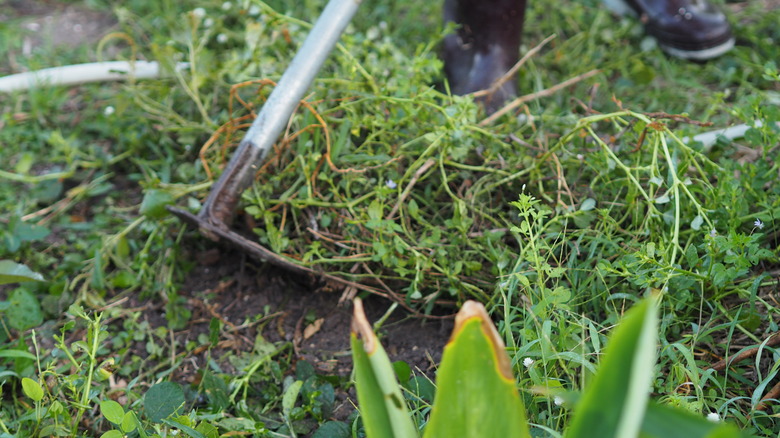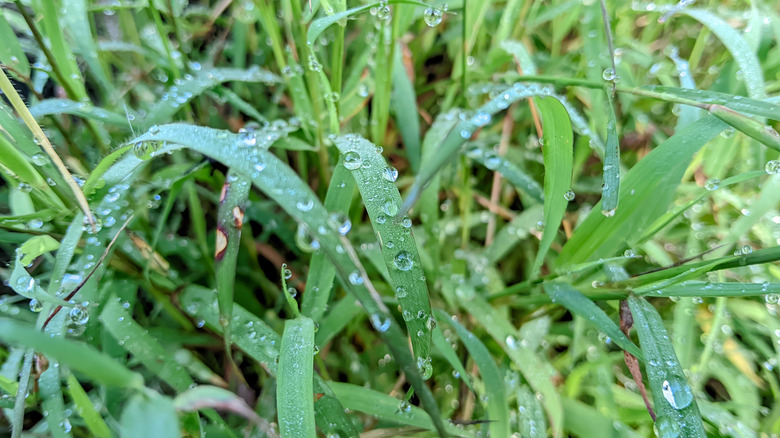The Crabgrass Look-Alike You Definitely Don't Want In Your Yard (& The Best Way To Get Rid Of It)
Invasive yard weeds keep us on our toes. Just when we think we have the protocol down to keep them from competing with the turf grass, another weed pops up that may look similar but has different quirks. Such is the case with crabgrass lookalikes. Crabgrass (Digitaria spp.) isn't the only weed with flat blades that can take away your lawn's nutrients and spread out of control. Quackgrass (Elytrigia repens) may partially blend into the rest of your green turf, or be confused for crabgrass. But it's even harder to remove, and to eradicate it you'll need to take a different approach than you would with its look-alike. With determination though, you can get rid of quackgrass through digging, good lawn management practices so healthy grass can hold its own, herbicides, or a combination of methods.
You can tell the two weeds apart through closer examination. Quackgrass will often be a darker green than crabgrass, and grow in the cooler seasons, unlike the latter, which is an annual that thrives in warm weather. It grows in clumps rather than in the star pattern seen in crabgrass. Quackgrass is a perennial, making it harder to eliminate. It spreads by rhizomes, which are stems that burrow underground.
How to tackle quackgrass in your lawn
Some methods that are second nature for gardeners, like hand-pulling, aren't recommended in your quest to get rid of quackgrass. Because its roots branch out underground, pulling it up will usually only break off the above-ground parts of the weed and it will keep growing. If you don't have much spread yet and want to try a hand-removal method, it's best to dig into the ground and uproot the whole weed. Make sure you get all the roots and rhizomes, as you would with other cool-weather annual weeds in your yard. After doing this, re-seed the lawn and be very vigilant – it's possible that some of the rhizomes will remain and more quackgrass could still pop up.
Another approach before turning to herbicides, is to crowd the quackgrass out with a fast-growing turf species during either spring or fall. More frequent mowing and using a nitrogen-rich fertilizer, will help the desired grass have an advantage over the invader. If you need to go the herbicide route, use a non-selective type, but be aware you may need to apply it several times. It's good to try some of the least harmful ways to kill weeds before this step, since the herbicide that's recommended can wind up killing patches of your lawn.

